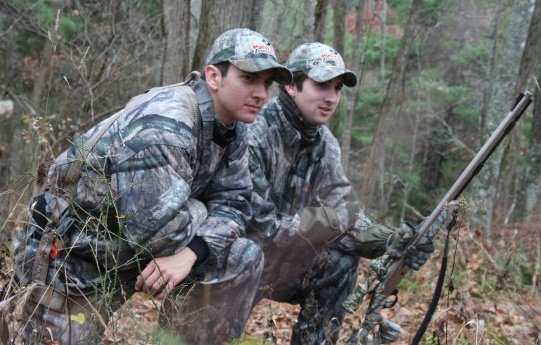We strategically planted these five trees in two locations. The apple trees were planted in a field adjacent to the ridge that borders our hunting property. Since our hunting property is on the South facing slope of Chestnut Ridge, it heats up rather quickly during the summer months because it receives the first sunlight and stays hotter longer. The cool shade along with the ample water supply provided by the creek that spits the two ridges makes this area a primetime daylight bedroom for a mature buck. Since bucks are inherently lazy and only travel b
Every summer, around mid-July to early August, mature bucks will gradually move out of their summer range and into their fall range. This is a slow and delicate process, and if at any minute the old buck feels threatened or hunted, he will resort back to safety (making eliminating human presence on your hunting property a top priority). This is where the fruit trees become vital. The fruit trees generally begin dropping their fruit in mid-August to early September. However, the deer will frequent each individual tree daily well before these times to see if any of the sweet fruit has fallen. The comfort of the refreshing creek branch combined with the tasty nutritious apple trees will attract mature bucks to our property sooner and hold them their longer.
The pear trees offer the same solution. These two trees were planted at another field edge, about 320 yards North-North West of the apples. With the same process, just a different set-up, these pear trees will offer unique opportunities. A pond sits North-West of these pear trees about a half mile, as the crow flies. It is important to remember how vital water is to a deer and its travel patterns. Deer go to water 2-3 times daily taking roughly 3-4 quarts per day. However, the majority of their water intake is provided by lush vegetation they consume during the spring and summer months and the dew in which that vegetation holds. As was true with the apple trees, the allure of the pear trees combined with the cool pond will again, attract and hold deer on our property. The unique twist about this setup is how it will play right into another one of our favorite hunting strategies. The two pear trees are located 150 yards below one our property’s best producing acorn lots which the deer really hammer from September to mid-November. Pears will fall later than the apples, usually after the first frost, which is generally when the deer begin their acorn feast. Let's just say that section of our property will deemed a 'honey-hole' during early season. Thinking about these possibilities sure gets me fired up!
The potential of these fruit trees is endless and their maturation process will be fun to watch. Unfortunately, it will take 5-6 years before these trees will bear fruit. Tremendous upkeep is required and monitoring their growth is essential, but the possibilities these young trees hold makes them well worth the wait.

No comments:
Post a Comment